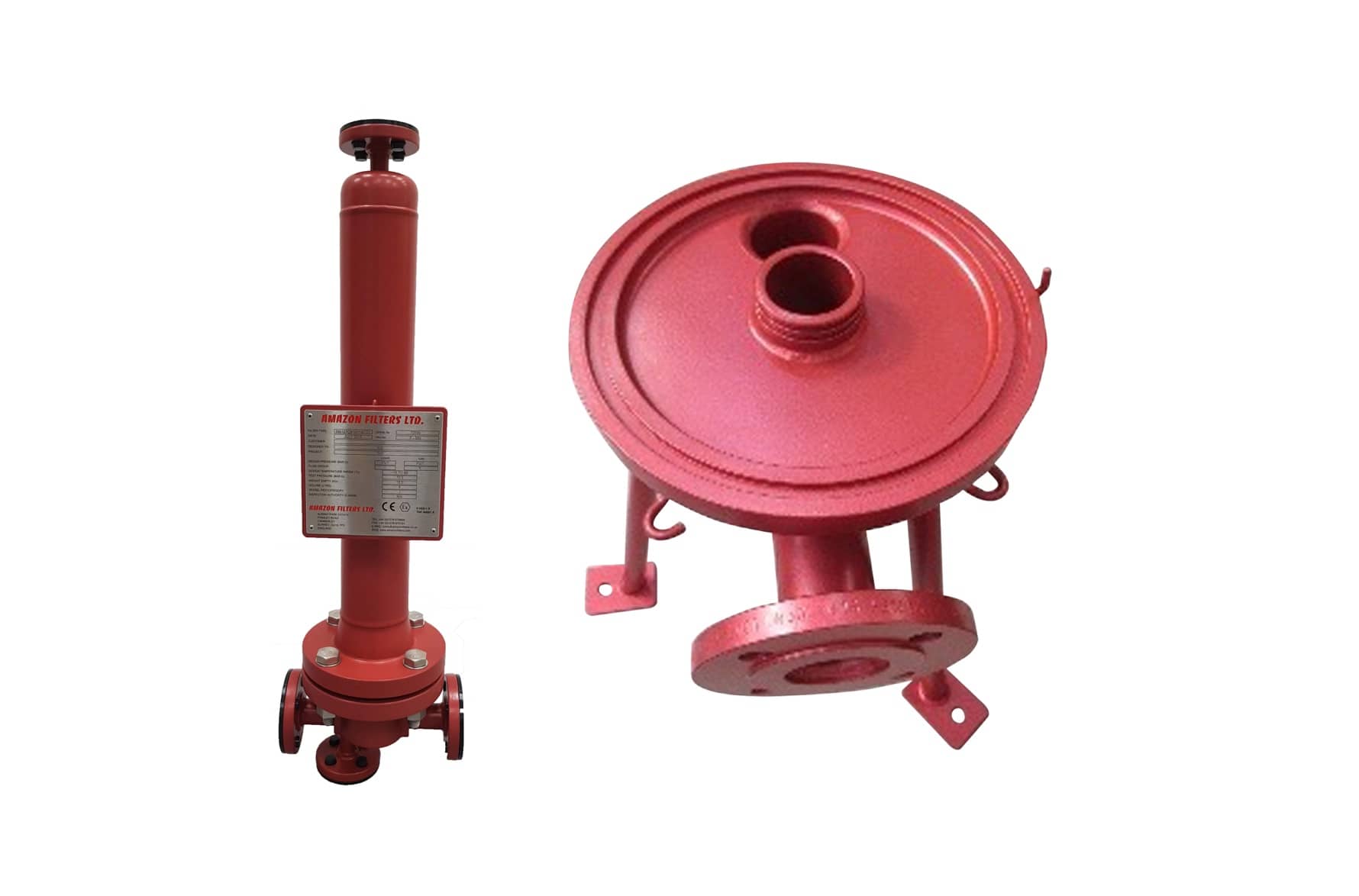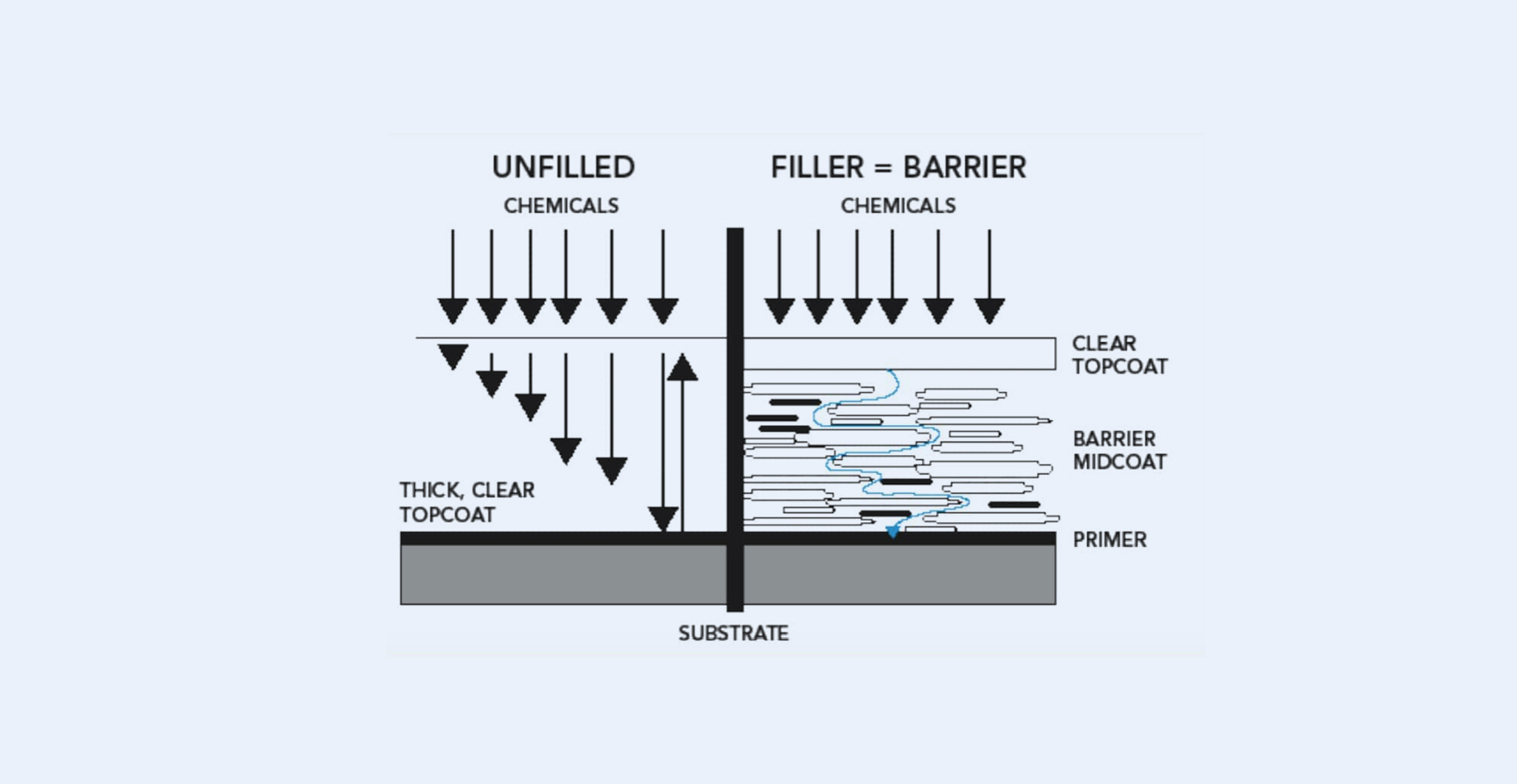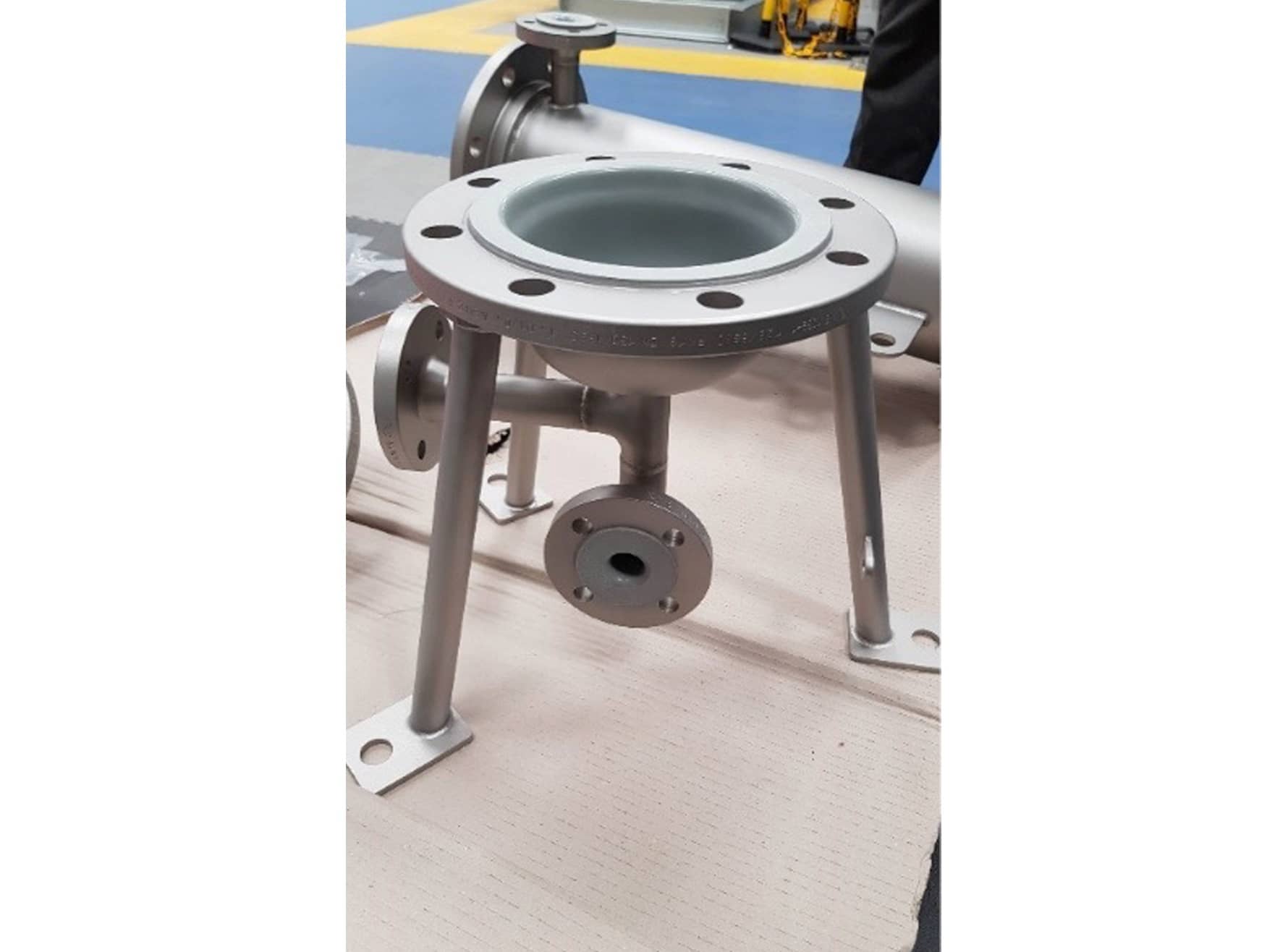Limitations of fluoropolymer coatings
While having superb chemical resistance, fluoropolymer coatings suffer in varying degrees from permeability and susceptibility to damage that limit their useful life in service before repair or replacement is necessary. All fluoropolymer coatings are microporous which means that the process fluid permeates over time, eventually reaching the substrate, resulting in blistering and delamination of the coating, and chemical attack of the substrate.
To mitigate against this, we only use ‘filled’ coatings such as ‘Ruby Red’ high build PFA coatings which offer excellent resistance to both permeation and abrasion when compared to other fluoropolymer coatings.


